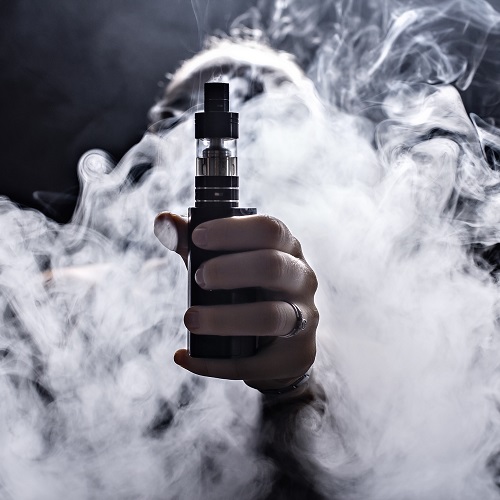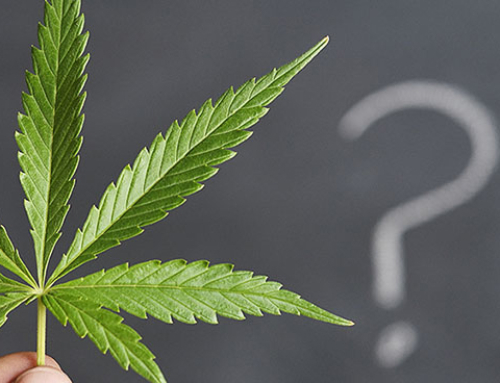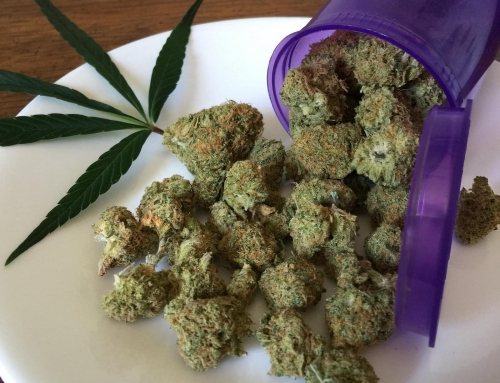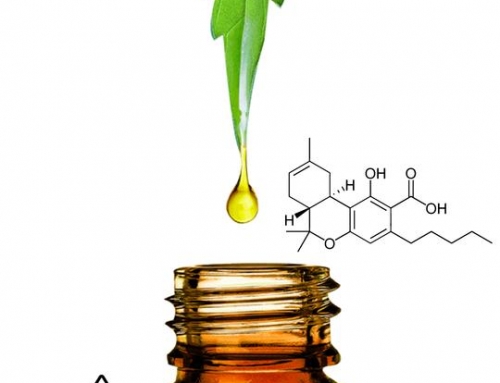Everyday there are arguments between people all over the world comparing the personal benefits and costs from smoking tobacco vs. smoking cannabis vs.vaping nicotine vs. vaping cannabis. This is arguably the most important health discussion in cannabis today.
Cigarette Smoking
Let’s look at smoking tobacco first. The negative aspects inherent in smoking cigarettes almost totally overwhelms anyone arguing a positive effect. Cigarette smoke contains over 4,000 separate chemicals, countless dozens of which are either carcinogenic or highly toxic. Cigarette smoking leads to almost a half million deaths a year in the US while the total tops six million worldwide. When considering the negative health effects of smoking tobacco, you normally think of lung cancer. While lung cancer has a direct connection to smoking so do cancers of the mouth, larynx, esophagus, bladder, kidney, pancreas and cervix. But the health problems only start with cancers. When it comes to the lungs, smoking cigarettes also causes emphysema, chronic bronchitis and asthma. Tobacco smoking can also impact your health by increasing blood clots and aneurysms in the brain, which lead to stroke as well as increasing blood clots in the legs, which then travel to the lungs. It is an indisputable fact that smoking is associated with coronary artery disease, increasing the chances of angina and heart attacks. We know smoking increases blood pressure and decreases the blood supply to the extremities and can even cause erection problems. Further, tobacco smoking can significantly contribute to diabetes and metabolic syndrome. There are also many problems with pregnancy when tobacco is present including infertility, low birth weight babies, premature labor, miscarriage and birth defects such as cleft lip, congenital heart defects, abnormal fingers and toes, just to name a few. In addition, there are ongoing problems interfering with an individual’s taste and smell, loss of sight, tooth and gum disease and aging of the skin. In fact, a cigarette smoker creates one gene mutation for every 15 cigarettes smoked, on average. Gene mutations pile up over time causing a cascade of negative health consequences including death.
The most dangerous aspect of smoking is that it not only affects the smoker, but everyone around them. The smoke released by smokers and the smoke caused by the burning of a cigarette contains twice as much nicotine and five times as much carbon monoxide than the actual smoke that is inhaled by the smoker. Worse, almost 7,000 potentially deleterious chemical substances are found in secondhand smoke, almost double the chemicals the smokers themselves inhale. The health effects of second-hand smoke can range all the way from simple excessive sneezing and coughing to cancer.

If you think that not smoking and avoiding being around people while they smoke is enough, research is showing that you are wrong. It has been repeatedly shown that the tobacco smoke left lingering on furniture, clothes and other surfaces can react with indoor chemicals leading to the creation of even more toxic and potentially cancer-causing substances.
As negative as smoking cigarettes is; there is no question that it is one of the most prevalent and stubborn addictions to overcome. A main aspect of tobacco’s addictive property comes from the presence of nicotine. Nicotine is a highly toxic, psychoactive drug with stimulant effects on the electrical activity in the brain. Nicotine acts on the acetylcholine receptors used by the main neurotransmitters in the brain and nervous system. These neurotransmitters are the “chemical messengers” released by nerve cells to communicate with other cells by altering their electrical activity. The body responds to nicotine on these receptors as if they were the natural neurotransmitters and this results in an alteration in the activity and physiological functions of many brain and nervous system functions. With repeated nicotine dosage, the body adapts to try to restore normal function. One way it adapts is to grow more acetylcholine receptors.Therefore, there is a structural as well as a functional change in the brain of a smoker. Thus, the addiction is developed.
While some smokers argue that cigarettes serve a calming effect when stress is present, there is even a problem with this argument. Given that nicotine causes activation of the “pleasure center” of the brain, tobacco smokers build up tolerance and require more and more nicotine to get the same calming effect. This means nicotine becomes increasing more problematic for health over time. Physiologically, during tobacco inhalation, nicotine causes blood pressure to rise and heart rate to increase. When this happens, the arteries narrow and restrict blood flow to vital organs. In addition, carbon monoxide in the smoke reduces oxygen in the blood and together creates an imbalance between the need for oxygen by the cell and the amount of oxygen the blood can supply. 80-90% of nicotine in the blood is metabolized by the liver and then excreted by the kidney making the half-life of nicotine in the blood about two hours. However, since smoking is a multiple dosing activity considerable accumulation occurs and can be present for six to eight hours after smoking has stopped. This becomes particularly problematic because about the time nicotine leaves the system, a smoker wants another, and the cycle is repeated over and over.
Vaping Nicotine
As vaping becomes more popular, the obvious question has surfaced as to whether vaping should be regulated similar with tobacco products, i.e. wrapped with dire health warnings and subject to Federally enforced marketing restrictions. While many argue yes; others believe that vaping is positive in that it helps to diminish tobacco usage. Most serious vaping advocates believe that vaping liquids should be subject to cGMP manufacturing oversight, but that health officials should be encouraging their use to lower the burden of morbidity and mortality inherent in smoking tobacco. While the good scientific research into this is limited, there is some research that is encouraging for their arguments. A study in the medical journal Lancet concluded that e-cigarettes, with or without nicotine, were as effective as nicotine patches for helping smokers quit. Granted, patches have had a disappointing record in helping people stay off cigarettes for more than a few months, but there are reasons to think that e-cigarettes would be even more effective outside the laboratory. Certainly if you were to replace nicotine or add to it the beneficial biological effects that you receive from vaping cannabis related products including specialized terpene blends that are able to create such powerful effects as appetite regulation, cognition enhancement, sexual performance as well as regulation of blood pressure and immune function through direct response olfaction (vaping), you have an enhancement of overall health and wellness. And by eliminating a risk factor such as cigarette smoking, you will certainly save lives in the long run.
In the real world, of course, people get to choose how they want to battle the tobacco addiction. Vaping has several advantages over patches and gums. For one, they provide a quicker fix, because the pulmonary and olfactory routes are the fastest practical ways to deliver nicotine to the brain. Secondly, by adding direct response olfaction triggers setting off various physiological or behavioral changes as evidenced with properly formulated cannabis products great benefits can occur. Vaping devices also offer visual, tactile and gestural similarities to traditional cigarettes which more closely approximates the additive environment of smoking cigarettes.
Vaping critics rightfully point out the need for more research, before abandoning calls for ever increasing oversight on e-cigarettes and vaping. A thorough review of the research that exists today clearly shows that vaping nicotine, while not healthy in any way, is far safer than smoking cigarettes. Anyone can argue individual points, but the bottom line cannot be refuted: no tobacco leaves are combusted, so they don’t release the tars and gases that lead to cancer and other smoking-related diseases. Instead, in a vaping device, a heating element converts a liquid solution into an aerosol that users exhale as a cloud that resembles smoke. The e-liquid solutions typically used in vaping devices range from solutions of varying concentrations of nicotine- from high (36 mg per milliliter of liquid) to zero, all intended to help people wean themselves off cigarettes and the addictive stimulant (nicotine) in them. While eliminating nicotine dependence is the intended purpose and the ideal use for vaping, even if people continue vaping with some nicotine, regular exposure to vaped nicotine has far less deleterious effects in healthy people compared to smoking tobacco. Not to mention that if the main purpose of vaping is to reduce nicotine dependence and smoking, why not endorse vaping as the FDA has approved the extended use of nicotine gums, patches and lozenges which countless physicians prescribe in clinical practice with variable success rates. It Is not arguable that most scientists concerned with the health of the world would much rather see people vaping than smoking a cigarette which is known to cause a plethora of health challenges, many of which lead to death.

Vaping critics also worry about the main ingredients in vaping solutions, aside from nicotine, originally were propylene glycol (PG) vegetable glycerin (VG) and flavoring. Recently, however, many various carrier oils have been substituted for VG and especially PG with good success. While some people favor one carrier oil over another, basically speaking, even in the case of propylene glycol, these ingredients are generally regarded as harmless. In fact, these ingredients are already being commonly ingested in toothpaste, hand sanitizer, asthma inhalers, and many other FDA-approved foods, cosmetics and pharmaceuticals. Yes, there are also traces of nitrosamines in some vaping solutions on the market today, known carcinogens true, but they are present at levels comparable to the nicotine patch and at far lower concentrations than in regular cigarettes — 500- to 1,400-time lower. Metals like cadmium, lead and nickel may be there also, but once again, in amounts and forms considered non-toxic. “Few, if any, chemicals at levels detected in electronic cigarettes raise serious health concerns,” a 2011 study in the Journal of Health Policy determined. “The preponderance of the available evidence shows [e-cigarettes] to be much safer than tobacco cigarettes and comparable in toxicity to conventional nicotine replacement products.”
Given the fact that e-cigarettes are marketed primarily based on their level of nicotine and on their flavor, let’s dive deeper into these two aspects. Nicotine is an alkaloid derived from tobacco and is one of the most toxic of all poisons. Aside from being highly addictive, as we mentioned earlier, nicotine adversely affects virtually every organ and system in the body. Its biological effects are rapid and widespread, extending to all systems of the body including cardiovascular, respiratory, renal and reproductive systems. Nicotine has also been found to be carcinogenic in many studies. Nicotine promotes tumor growth by affecting cell proliferation, angiogenesis and apoptotic pathways. It also causes resistance to the chemotherapeutic agents used with cancer patients. It should also be noted that there is no proven, substantive beneficial effect of nicotine on human body. For anyone concerned with maintaining or improving their health, nicotine should be avoided in any form including inhalation in nicotine laced e-juices for vaping. There are no counter arguments to critics of nicotine; but the reality is, typically, the person vaping nicotine solutions receive far weaker concentrations of nicotine than do the cigarette smokers.
The second popular marketing hook for e-cigarette and e-juice vaping liquids, even nicotine free ones, is the flavorings. Here is where the critics should be creating mad noise but oddly, they are relatively silent. Typically speaking, stronger flavorings are preferred over weaker ones. For years, virtually all flavorings in vaping liquids were artificially manufactured, as they are the strongest and most appealing. After all, when was the last time you saw a cotton candy tree or a bubble gum bush? But those flavor profiles certainly do exist in a flavor company catalog with over 3,000 different artificial flavors available to manufacturers – none of which are healthy. In fact, artificial flavorings have been shown to cause many serious problems including depression, dizziness, chest pain, headaches, fatigue, allergies, brain damage, seizures, nausea among a huge list of other deleterious conditions. Some of the most popular flavorings have also been shown to cause genetic defects, tumors, and cancers most clearly bladder cancer. It has been also proven that many artificial e-cigarette flavorings damage lung cells by creating harmful free radicals and inflammation in lung tissue. Studies show that many artificial flavors create more stress and toxicity on lung tissue and significantly raise various inflammation biomarkers. Additionally, when heated these flavors release by products in the form of nanoparticles that can reach far into lung tissue, cell systems, and the blood stream. The bottom line is that artificial flavorings should be avoided in all e-cigarette and vaping products regardless of nicotine level.
Anti-vaping advocates have a further worry; that vaping is made too attractive and encourages people, especially young people, to become addicted to nicotine and, in some cases, to progress to smoking. This is a valid worry. For example, the CDC showed concerns with some initial data released showing that 1.78 million middle and high school students had tried e-cigarettes. “This raises concern that there may be young people for whom e-cigarettes could be an entry point to use of conventional tobacco products, including cigarettes,” the CDC concluded. According to that same CDC study, however, an extremely small percentage of teenagers use e-cigarettes regularly — only 2.8 percent of high school students reported using one in the previous 30 days in 2012 when the study was conducted. And while that number is rising — it was 1.5 percent in 2011 — teenage cigarette smoking rates are at record lows. That might suggest that increased exposure to e-cigarettes isn’t encouraging more people to smoke. Still today in 2019, the numbers are so small that it’s still too early to make definitive claims about the relationship between teen vaping and smoking. The FDA should call for reliable, informative labeling and safe manufacturing standards for vaping liquids. Rightfully so, the government has attempted to allay concerns about potential gateway use and youth addiction to nicotine by banning the marketing and sale of vaping devices and liquids being sold to those under 18 years of age.
Smoking Cannabis
When mentioning smoking cannabis, most people immediately think of smoking marijuana. There are many important benefits for some to smoke marijuana and some very relevant negative for others. To begin, smoking any form of cannabis, marijuana and hemp included, is one of the fastest ways to absorb the key healthy compounds. A few tugs on a joint with high THC and/or CBD content and you get the benefits delivered quickly. But is smoking the best way to deliver those benefits to most?
We have discussed earlier how overwhelmingly bad smoking tobacco is for the entire body. Now we center on the question of whether smoking marijuana frequently is bad for a person. This is not as easy to answer as a yes or no question. The decision to smoke marijuana daily is a very personal and situational matter. If a person has debilitating anxiety and cannot function normally without smoking; it is not a bad thing. If a person has severe intractable pain 24/7 and can’t eat or sleep, then smoking marijuana is probably not a bad thing for them either. However, if you are in good health and smoke marijuana frequently simply to get intoxicated and avoid dealing with life’s challenges, perhaps you might want to reevaluate your frequency of marijuana smoking.
Given that smoking marijuana medicinally has been found help a wide array of negative health symptomology, it is impossible to dismiss smoking marijuana as a valid option for many. Medical Marijuana has been found to diminish the following symptoms: Anxiety, Cramps, Depression, Glaucoma, Fatigue, Headaches, High Blood Pressure, Inflammation, Insomnia, Lack of appetite, Muscle Spasms, Nausea, Pain, Seizures and Spasticity, among many other less prevalent conditions.
On the flip side, while it is highly doubtful that smoking marijuana is as bad for one’s health as is smoking tobacco, smoke of any type is harmful to the lungs. Whether from putting out a fire in a burning building, smoking tobacco or smoking marijuana, there are always a multitude of toxins and carcinogens released from the combustion of materials. On the plus side marijuana smoke has less problem chemicals, especially nicotine. On the minus side, marijuana smokers tend to inhale more deeply and hold their breath longer than do cigarette smokers. This of course will lead to greater exposure to tar and other deleterious chemicals common to both tobacco and marijuana smoking. Smoking marijuana clearly damages the lungs in some limited ways, and regular use leads to chronic bronchitis and can cause an immune-compromised person to be more susceptible to respiratory infections and other opportunistic infections and disease states.

Secondhand marijuana smoke is also very bad for people as it contains many of the same carcinogens and toxins that exist in direct inhalation.
The method in which you smoke marijuana can also increase or decrease the frequency of negative factors. For example, smoking marijuana from a bong would be preferable to say smoking a blunt made form a tobacco leaf, i.e. backwoods. Obviously, smoking a tobacco leaf is similar or worse than smoking ground up tobacco.
While ingesting super-heated smoke and all the related chemicals is not beneficial in any form; most would agree that smoking marijuana is less harmful than smoking cigarettes. And marijuana smoking proponents would be quick to point out, rightfully so, the huge number of positive effects and beneficial health outcomes that come from cannabis use. While there is no argument there, most of those same effects can be obtained from vaping a cannabis concentrate oil or ingesting cannabis in another form, i.e. ultrasonic nebulizer (techy inhaler) or in edible form. The bottom line here is that given the negatives inherent in combusting plant matter and inhaling it, if an individual can get equal or better benefits from ingesting marijuana in another form, wisdom dictates they should. If the individual gets more benefit from smoking marijuana, however, there is little question that it is a far less harmful practice than is smoking tobacco.
Moving on from smoking marijuana, one final note should be made about smoking hemp flower. Again, no matter what the specific plant is that is being combusted, smoke and the resulting chemicals are not good for the body. Although there is not a lot of research into hemp smoking, anecdotally we have found the fastest way for people to abandon their dependence on smoking tobacco is not through nicotine patches, gums or vaping solutions but by simply smoking hemp. We have also observed that smokers who have moved from tobacco to hemp can very quickly move to vaping nicotine free hemp oils with far more beneficial outcomes.
Vaping Cannabis
When discussing the vaping of cannabis, it is very important to have separate conversations about vaping marijuana and vaping hemp.
When it comes to vaping marijuana, people can choose from a variety of methods including vaping the actual flower in appropriate devices, inhaling flash vaporized concentrates as is common in dabbing or more popularly simply vaping cannabis concentrates from a simple vaping pen. We will consider the pros and cons of the various vaping devices in a future article; but for now, there are some simple facts everyone should know. Many studies have found that the cannabinoids in marijuana begin to vaporize at around 285 degrees and that the sweet spot for vaporizing cannabis is around 338°F. At these temperatures the active cannabinoids in cannabis are converted to a vapor that can comfortably be inhaled as opposed to a joint which can burn as hot as 2000°F or more. Obviously, vaping causes less stress on the mouth, throat and lungs while delivering equal or better results from cannabinoids and terpenes. In other words, for many people, most benefits that one derives from smoking marijuana, vaping concentrates can do the same or better. And we have already discussed at length the benefits of vaping nicotine as compared to smoking tobacco and many of those same points are relevant here. Given that, it is safe to say that vaping marijuana oil concentrates is better, in general, than smoking marijuana is.

When it comes to hemp, vaping has proven to be an effective way to unlock the benefits of CBD, which include properties that combat anxiety, relieve pain, reduce nausea, and even suppress seizure activity. Plus, it is a simple matter to enhance hemp concentrates with additional terpenes to create a variety of highly beneficial effects.
There is one additional concern regarding vaping hemp oil and that centers on the potential respiratory hazard of inhaling cuticle wax residue from the plant. Cuticle wax is the oily, fatty layer covering the hemp flower. When the flower is burned in the form of a cigarette or in a bong, the wax layer is burned away. When less processed full spectrum oils are vaped, the temperatures are lower allowing small bits of the wax to aggregate while settling into the lungs sometimes leading to health compromising solid granulomas in the lungs. This is highly speculative with no real data to support it; however, it is a valid concern. This issue can be avoided by vaping a winterized oil that would be essentially wax free.










